An awesome garnish, parsley is also a powerful garden green! Learn how to grow parsley and benefit from its high phytonutrient content.
How to Grow Parsley
As an avid herb gardener, I have always thought of parsley as an herb, meant to be used sparingly. But when I started to think about the flavors that make salads and sautéed greens tasty—plus the amount of phytonutrients it contains—I realized I needed to give parsley another look.
The Goods on Growing Parsley
There’s a lot to love about parsley.
Why Grow Parsley? It’s Ridiculously Nutritious
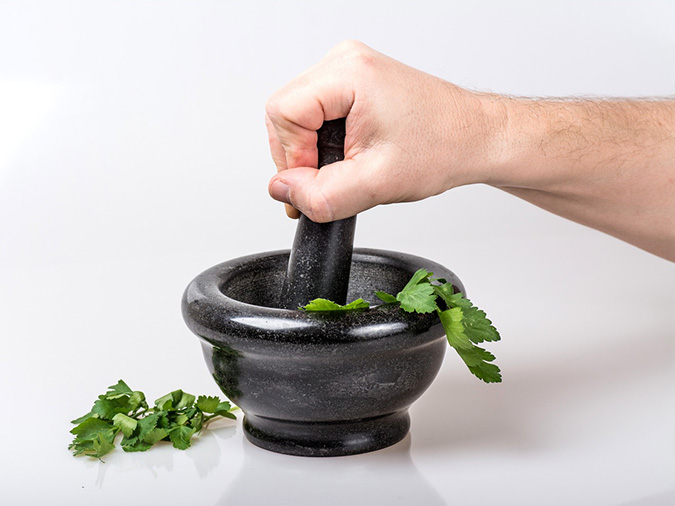
Image by Lubos Houska from Pixabay
There’s compelling evidence that parsley might be a super green—even in small quantities. Like many flavorful greens, parsley is a powerhouse of vitamins A, C, and K.
In just 8 calories’ worth—or half a cup—you can get 554% of your daily allotment of vitamin K, over half your vitamin C, and 15% of your vitamin A. You also make a dent in your required amounts of folate, calcium, potassium, iron, and magnesium.
You May Also Enjoy:
“15 Natural Antibiotic Alternatives”
“Oatstraw Benefits: Stress Reliever, Love Potion, Brain Booster, and More”
Where parsley really rocks, though, is in the phytonutrients. Now, I am not a medical doctor, scientist, or nutritionist. But what I understand about phytonutrients is that science is just barely scratching the surface of knowing why these are so important.
What we’re learning, however, is that even small quantities can make a big difference in human health.
Parsley in particular has a wide range of flavonoid antioxidants, including uteolin, apigenin, lycopene, beta carotene, and alpha carotene. It also has volatile oil compounds like myristicin, limonene, eugenol, and alpha-thujene. 1)https://draxe.com/parsley-benefits
This article on how to grow parsley is part of our Green of the Month series. To read the rest of the articles in the series, click here.
Parsley’s particular mix of phytonutrients are believed to have anti-aging, cancer-preventative, antifungal, antibacterial, gastrointestinal, and bad breath-fighting benefits. It is often used as a digestive aid and as a diuretic to help promote urinary tract health.
Parsley Is Delicious
Like mustard and arugula, two greens I’ve also covered in this series, parsley has a strong flavor profile. I wouldn’t call it “peppery,” but more like “savory meets lemony and minty in a balanced way.” It has tang, yet when mixed with other greens, its flavor is not overwhelming.
You May Also Enjoy:
“Spice Things Up With These Healthy Salad Greens”
“Growing Arugula: The Rocket in Your Salad Bowl and Garden (With Recipe)”
“Mustard Greens: What You Need to Know Before You Grow (With Recipe)”
Even though it took reading Paul’s comment to make me think of parsley as a green, I’ve been a huge fan of its flavor for a long time. My favorite way to eat parsley is chopped to bits, drowned in garlic, butter, and salt, and poured over potatoes, pasta, or escargot (when I can find them at the store). Its pungency stands up well to the creamy, spicy, sharp flavors of that particular combo quite well.
I am also learning to appreciate its subtlety in a salad. Finely chopped, it blends right in with other softer-textured greens. It adds a lemony, crisp freshness that makes even simple salads stand out. Of course, it is also awesome in tabouleh.
Garden Versatility

Image by Beverly Buckley from Pixabay
Some greens don’t age well. Once they hit maturity, you have to harvest them or they turn bitter and lose their texture.
Parsley, however, is most often left in the ground as a long-standing herb. As a biennial (meaning it flowers and goes to seed in its second year of life), it can even overwinter in warm climates (or greenhouses).
You May Also Enjoy:
“All Hail, Kale! Growing Kale at Home (With Recipe)”
You can grow parsley as a green in beds like you would lettuces. Alternately, you can use it in your edible landscape or herb garden.
Parsley doesn’t mind partial shade, particularly in hot weather. It also grows well in containers—even indoors in a sunny windowsill.
Habitat for Swallowtail Butterfly Caterpillars
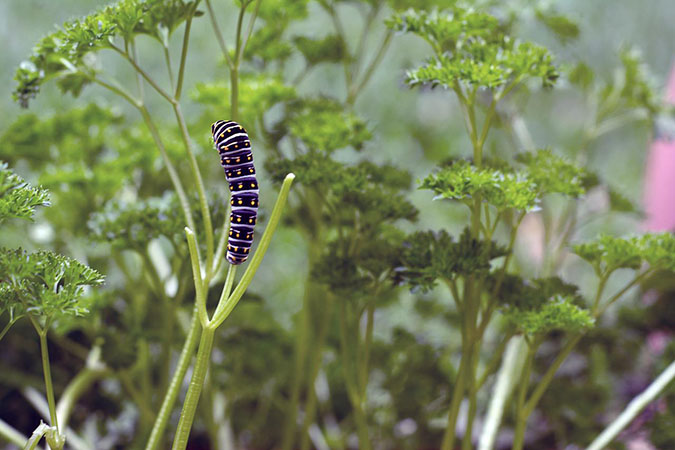
Image by Stephen Dumas from Pixabay
As I said, I’ve been growing parsley in my greenhouse. In spring and summer, I open up my greenhouse doors and windows. So, sometimes I get wildlife visitors.
Two years ago, I came in one morning to find all the leaves of my parsley plant missing. I thought maybe a rabbit had visited until I noticed beautiful caterpillars crawling all over my plant. I counted 20—which explained why so many leaves were missing. I did a little Internet research and discovered they were Eastern Swallowtail Butterfly larvae.
Since those caterpillars had pretty much eaten all the leaves already, I cut off the stems with the caterpillars in place and took them over to a stand of Queen Anne’s Lace I had growing.
You May Also Enjoy:
“Attracting Pollinators to the Garden Year After Year”
“7 Ways to Use Pine Trees for Food and Medicine, Year-round”
I thought my parsley was done for. How could it recover from such devastation? But to my surprise, a few days later it had new growth. That plant came back with vigor and grew strong until the following spring.
The moral of the story? In addition to be being tasty and a nutritional powerhouse, parsley makes a perfect habitat for swallowtail butterflies. Plant a few extra as encouragement for those beautiful pollinators.
Recipe for Simple Parsley Sauce
Don’t let all that parsley go to the butterflies, though! Save some to use for this super-simple sauce that goes great on fish, pasta, or potatoes. Parsley sauce is often considered an old-fashioned sauce. Personally, I think it deserves a revival!
Simple Parsley Sauce
- 3 Tablespoons butter or lard
- 2 Tablespoons all-purpose flour (or other thickening agent)
- 2 cups whole milk
- ½ cup chopped parsley
- 2 cloves minced garlic
- Salt and pepper to your taste
Parsley sauce is a kind of gravy. You start by making a roux. To do this, melt your butter or lard in a sauce pan. Toss in your parsley and garlic and sauté them together for a few seconds. Then, over low heat, add the flour and stir the mixture quickly to make a smooth paste.
Once you have your paste, add your milk little by little. As you stir, your milk will start to thicken. As it thickens, add more milk until it is all stirred in. Remove your sauce from the heat. Add salt and pepper to your taste.
If you don’t use flour, substitute whatever thickening agent you prefer. Corn starch or arrowroot powder also work, although they do change the flavor profile a bit.
Personally, I love this sauce served over trout or gnocchi. You can also add a splash of lemon juice and some capers to the sauce to lighten it up.
A Few Cautions About Parsley
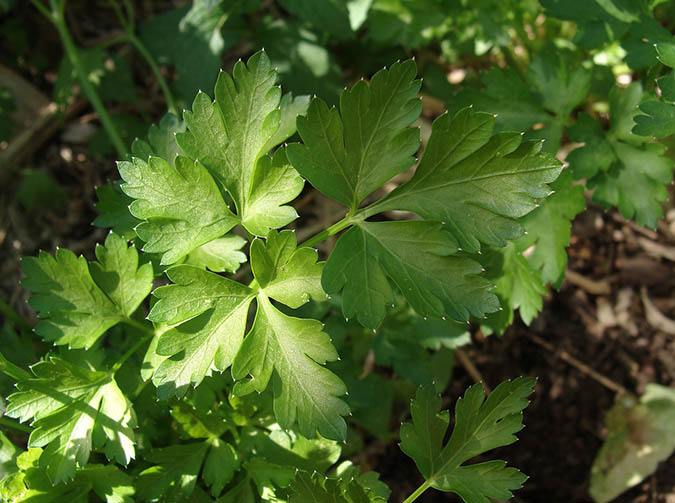
Image by carolalves from Pixabay
Now there are also a couple of things to be aware of before you make parsley part of your garden and your diet.
It’s in the Carrot Family
Parsley—like carrots, parsnips, fennel, celery, dill, coriander, and caraway—belongs to the Apiaceae or Umbelliferae family. If you are planning to include parsley in your garden rotation, you will want to avoid planting it after its relatives.
You May Also Enjoy:
“Composting the SCARY Stuff—Meat, Dairy, Bones, and Human Waste!”
“Small-Space Vermiculture, Step-by-Step”
“Sheet Mulching: Build Soil, Thwart Weeds, and Make Your Garden Fertile”
It’s also susceptible to some of the same pests as carrots, such as the carrot root fly. If you already have issues with these, you may need to take extra precautions by growing lots of parsley for regular greens.
Health Concerns
Just like with other leafy greens high in vitamin K, too much of a good thing can be a bad thing—especially for people on blood thinners or who may be pregnant. Although it’s rare, some people may have skin reactions when handling parsley.
Growing Parsley 101
My previous Green of the Month posts are about really-easy-to-grow mustard, arugula, and kale. Those three plants can be started directly in the garden and are almost hard not to grow. Parsley takes a bit more work to get started. However, once established, it’s a low-maintenance plant and can be harvested for a year in some climates.
Soil Preparation
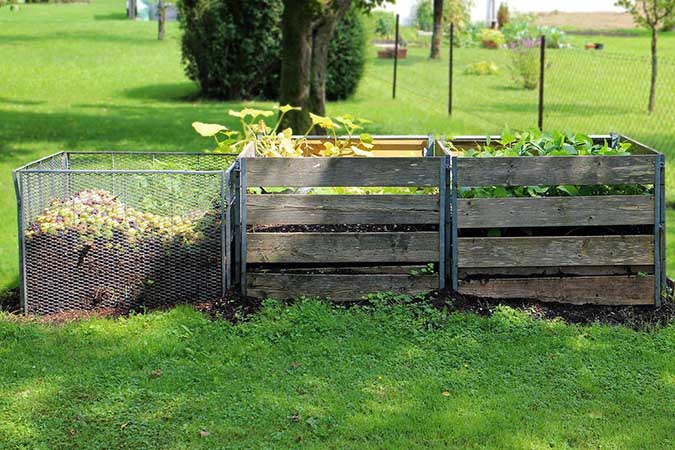
Image by Manfred Antranias Zimmer from Pixabay
Parsley can tolerate soil pH ranges from about 5.5 to 6.7.
Unlike carrots, which are light feeders, parsley is considered a heavy feeder. It will need more fertilization than other plants in the carrot family to make a lot of top growth. Fresh applications of compost or worm castings prior to planting can help.
It also needs consistent moisture in the soil and good drainage.
You May Also Enjoy:
“Special Challenges to Managing NPK in the Organic Garden”
Growing parsley in loamy soil that is loaded with organic matter will get you the best results. For this reason, many people often grow parsley in pots filled with fresh potting soil. Mulching with straw or wood chips will trap moisture and reduce the necessity of frequent watering.
Seed Starting
Similar to carrots, parsley seeds can take three weeks to start.
They germinate in soil temperatures between 50–80°F, with 70° F being the sweet spot. You can start them in seed mix or good potting soil. Sprinkle seeds on top of the soil and water regularly.
You May Also Enjoy:
“How to Start Seeds Like a Professional Grower”
Parsley growth is very slow initially. For indoor starts, expect it to take 8–10 weeks in ideal temperatures with sufficient light for plants to reach their transplanting size of 3 inches tall. Plants started outdoors can take even longer and often need to be watered more than once a day during dry periods.
Parsley is one of the few plants I always start in containers or in the greenhouse.
In my rural area, country produce stores sell flats of parsley so cheap that it often makes more sense to support my local economy and buy plants than to start my own.
Transplanting Parsley

Image by Hans Braxmeier from Pixabay
Transplant your parsley when plants are about 3 inches tall. There is a defined juncture between the root system and the above-ground green stems in parsley plants. This is often referred to as the crown. Make sure your crown does not sink below soil level.
Mulch around your transplant to help maintain moisture. However, do not cover the crown with mulch. Covering the crown can encourage fungal diseases. Water daily until the plant is well-established.
Mature Plant Care
Established parsley plants need regular watering for best production. Applications of compost tea once every two weeks encourage leafy production.
Plants need about a square foot of space if you plan to harvest regularly. If using mainly for decorative purposes and light harvesting, give plants a few extra inches to accommodate their mature size.
You May Also Enjoy:
“Compost Tea: An Easy Way to Stretch Your Compost”
“Aerobic Compost Tea, Worm Tea, and Leachate—A Clarification”
“Jump-Start Your Compost With These 5 Free, DIY Compost Activators”
Swallowtail butterfly larva are the most likely “pest” and those can be transferred to other host plants like Queen Anne’s Lace or overgrown dill plants as needed. Aphids and carrot root flies can also be an issue if your parsley is stressed either by too much or too little water. Generally, though, with mulch and watering as necessary, those pests prefer other plants (like your carrots).
Parsley can also be susceptible to fungal diseases. Maintaining consistent moisture in the soil is the best prevention for this.
Harvesting Parsley
To harvest, cut the largest leaves at the base of the stem. Parsley can be long-lasting in the refrigerator. However, leaves lose nutritional value after harvesting. For best results, harvest as needed and use fresh.
Varieties of Parsley
There are two main varieties of parsley—curly and flat leaf. Curly parsley is more decorative and often provides more leaf mass for chopping. Flat leaf, also called Italian parsley, is usually more tasty (in my opinion).
Seed companies have different strains of parsley, such as varieties grown for larger and more decorative leaves, stronger or milder flavor, or better heat resistance.
Unconventional Growing Tips for Adventure Gardeners
Try growing parsley root. Most of the parsley grown in the U.S. is flat or curly leaf parsley. In other parts of the world, parsley is also grown specifically for its root. Root parsley is often called Hamburg parsley or turnip parsley in seed catalogs.
The tops are similar in flavor to regular parsley, though they tend to be tougher. The roots look and taste a bit like parsnips (though with a less cinnamon-like flavor punch) and are more delicately aromatic.
Parsley roots can be eaten raw or cooked. They don’t store as well as carrots or parsnips. Plan to use them for fresh eating.
You May Also Enjoy:
“How to Make Homemade Yogurt: Easy, Inexpensive, and the Healthiest You’ll Ever Eat”
As with parsnips, the roots take around 120 days to form, so they do take up a lot of bed time if you are growing in small spaces. However, if you want to impress friends and family with your culinary prowess, parsley root will do it. The taste is mild enough to convince bland eaters, and the idea of eating parsley root is interesting enough to wow even the gourmands.
What Do You Think?
Do you grow parsley? Have any great tips for growing parsley or cooking with it? Share your thoughts in the comments below!
____________________
This is an updated version of an article that was originally published on May 1, 2018. The author may not currently be available to respond to comments, however we encourage our Community members to chime in to share their experiences and answer questions!
The Grow Network is a participant in the Amazon Services LLC Associates Program, an affiliate program designed to provide a means for our team to earn fees for recommending our favorite products! We may earn a small commission, at no additional cost to you, should you purchase an item after clicking one of our links. Thanks for supporting TGN!

Tasha Greer is a regular contributor to The Grow Network and has cowritten several e-books with Marjory Wildcraft. The author of “Grow Your Own Spices” (December 2020), she also blogs for MorningChores.com and Mother Earth News. For more tips on homesteading and herb and spice gardening, follow Tasha at Simplestead.com.
References
| ↑1 | https://draxe.com/parsley-benefits |
|---|
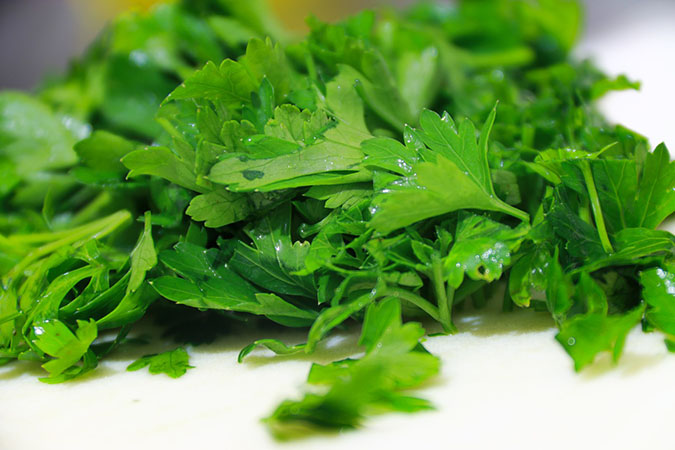
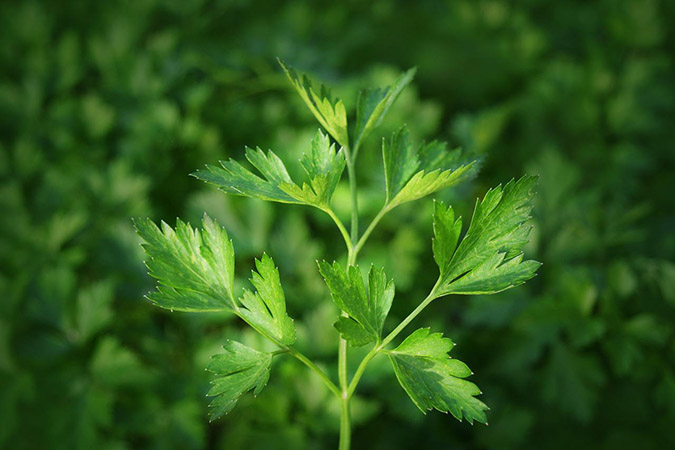
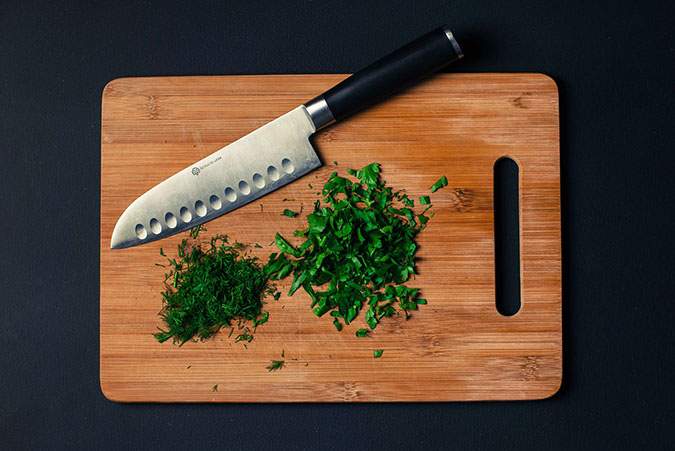

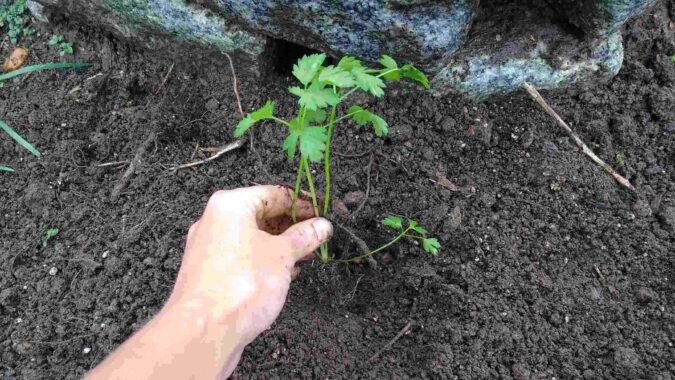
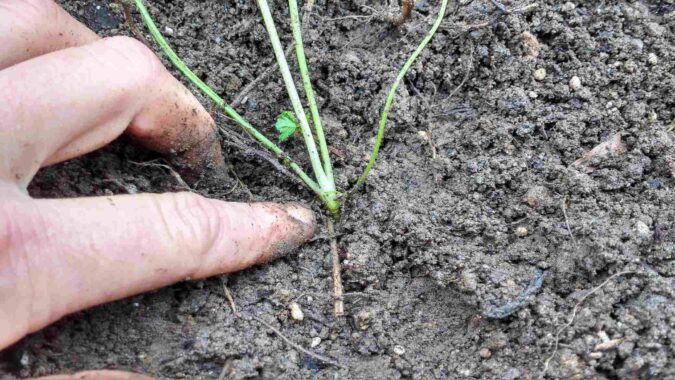
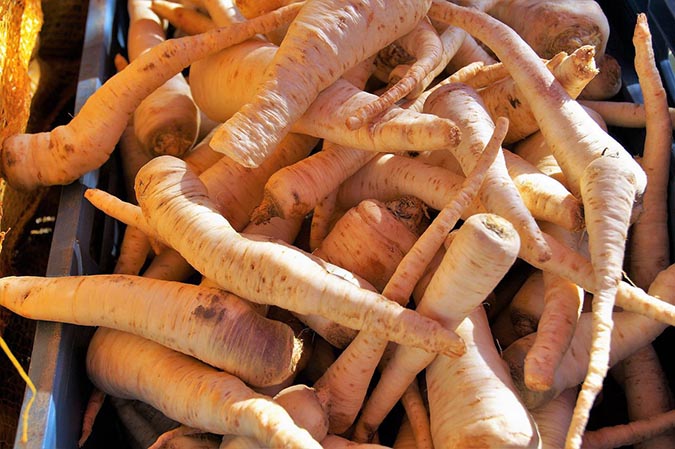







COMMENTS(5)
Great content! Thanks. That Apiaceae family sure is a mixed bag, eh? I’ve got some parsley seeds I’ve been needing to get into the ground. Glad I have this article to refer back to.
Thanks for reading Scott! You probably know a lot more about the wild side of the parsley family than I do. I’ve heard about some permaculture sites using cow parsley (Anthriscus sylvestris) as part of their food forest understory. I haven’t grown it or used it yet, but it’s on my list of things to research soon.
I’ve never gave much reverence to parsley before reading this article. Thanks for sharing!
Hey Brian – Thanks for reading. I’m pretty much addicted to this stuff now that I’ve been thinking of it as a real food source not just an herb. I am glad Merin and our reader Paul challenged me to think beyond lettuce!
Parsley root is always added to chicken soup in my country together with a small celery root. They enhance the flavour enormously. I have never really had success with growing parsley but I will have another go, planting it by the drip system around my lemon tree, where it gets some dappled sun. I use it for dissolving kidney stones and for detoxing heavy metals together with coriander leaves. Besides I like to sprinkle a small handful of parsley on everything.